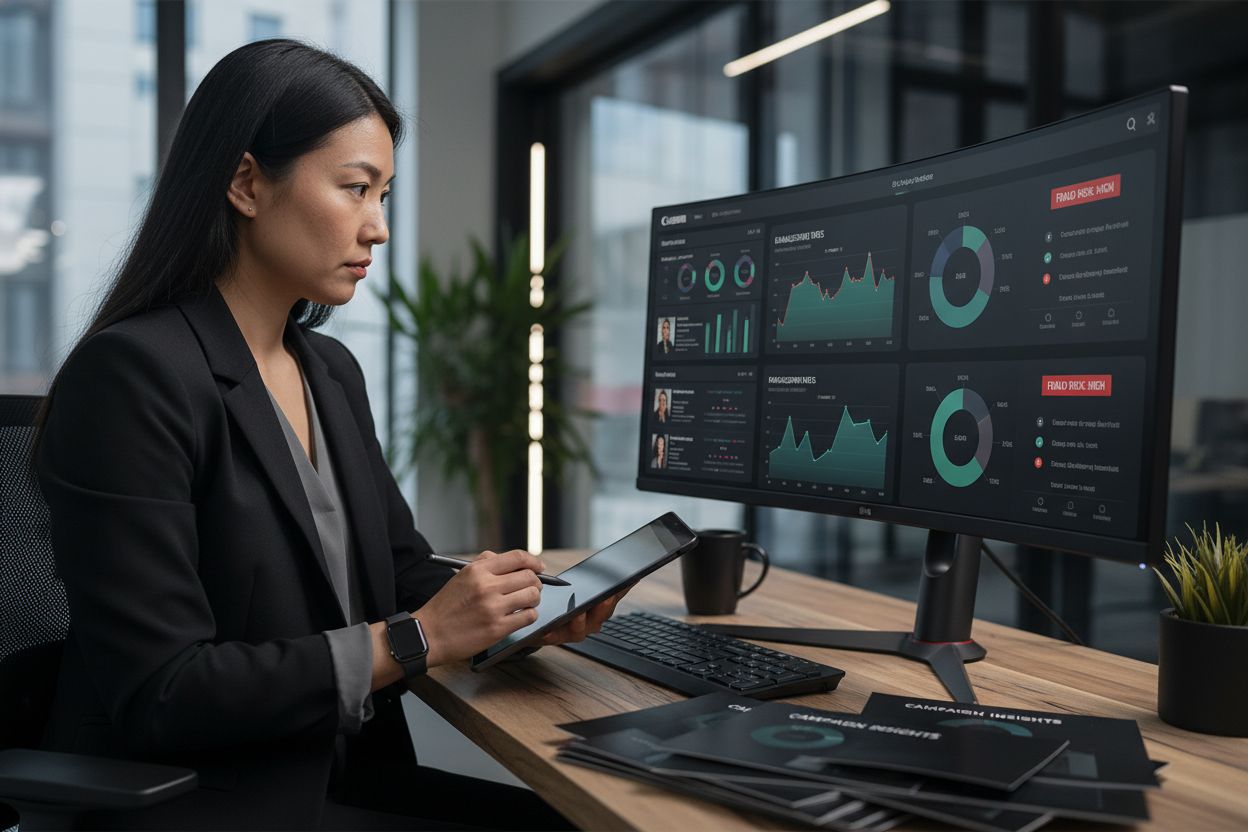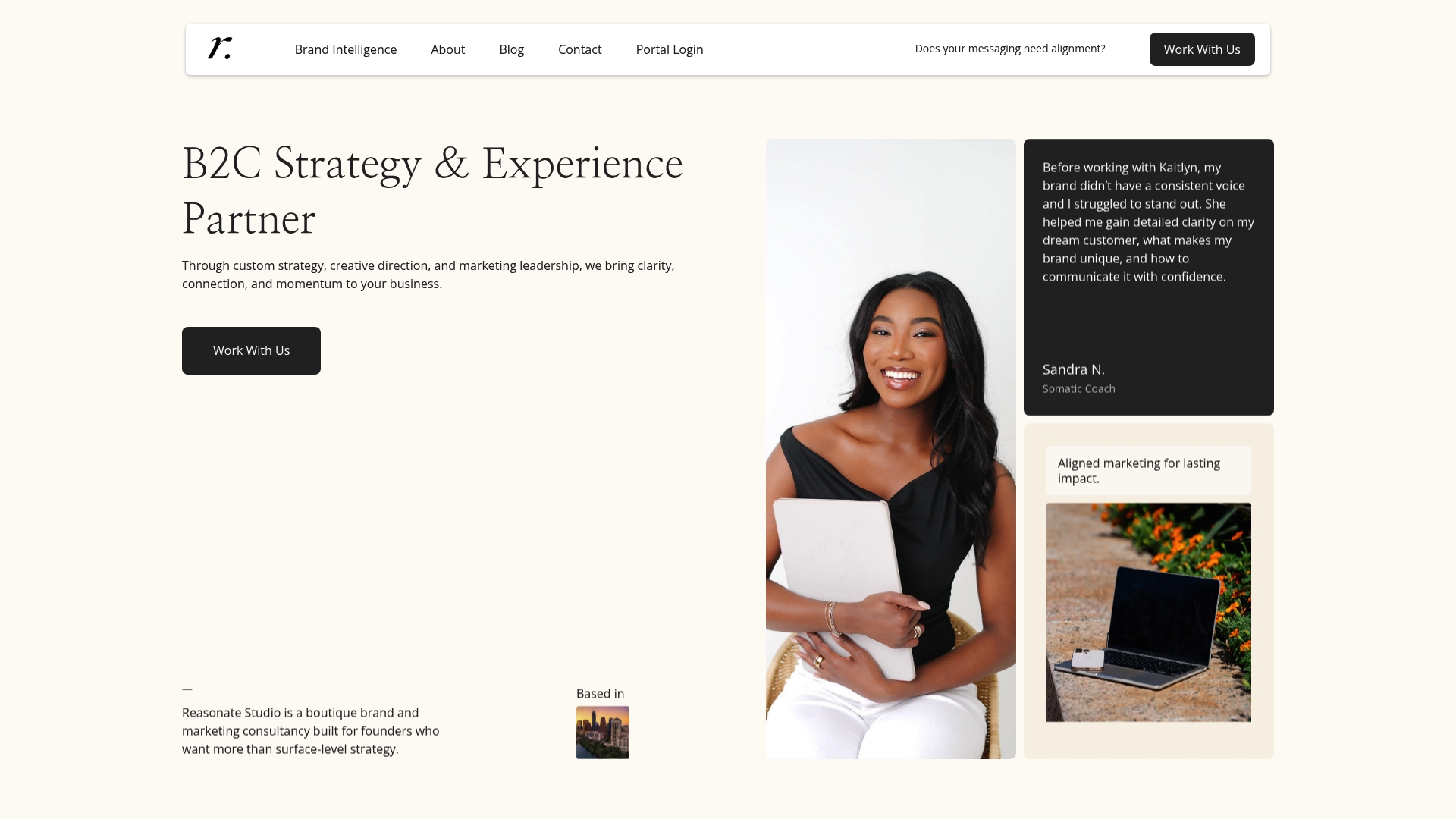Branding Strategies: Building Impactful Small Businesses

Learn how to create an influencer marketing strategy with clear, actionable steps. Build, launch, and measure campaigns to grow your brand and drive results.

Did you know that nearly half of brands now track conversions and direct sales to measure influencer marketing success? Simply partnering with popular creators is no longer enough. The most effective influencer campaigns start by pinpointing clear goals and truly understanding who you want to reach. When every decision aligns with these insights, your collaborations create real impact instead of just empty noise.
In influencer marketing, getting crystal clear about your brand goals and target audience is the critical foundation that separates successful campaigns from random shots in the dark. Without precise objectives and deep audience understanding, you risk wasting resources on ineffective collaborations that generate noise but no meaningful results.
Start by defining specific, measurable outcomes for your influencer campaign. According to recent research, marketers are moving beyond vanity metrics like reach to focus on concrete business objectives. The 2024 data shows 46% of brands now prioritize conversion rates, while 44% concentrate on direct sales impact. This means your goals should be specific and trackable.
Begin with a straightforward assessment. Ask yourself these key questions: What exact outcome do I want from this influencer partnership? Are you seeking brand awareness, product sales, email list growth, or website traffic? Each goal requires a different strategic approach. For instance, driving sales demands different influencer selection and content strategy compared to building brand recognition.
Here’s a comparison of influencer campaign goals and the metrics best suited to measure them:
| Campaign Goal | Typical Metrics | Strategic Focus |
|---|---|---|
| Brand Awareness | Impressions Reach |
Broad audience exposure |
| Product Sales | Conversion rate Sales |
Direct revenue impact |
| Email List Growth | Sign-ups Subscribers |
Audience building |
| Website Traffic | Clicks Site visits |
Drive web engagement |
| Engagement | Likes Comments Shares |
Audience interaction |
Understanding your audience goes hand in hand with goal setting. Create a detailed audience persona that goes beyond basic demographics. What are their pain points? What motivates their purchasing decisions? What content formats and platforms do they engage with most?
Pro Tip: A laser focused audience understanding beats broad targeting every single time.
Research suggests rigorous measurement and optimization techniques are crucial. This means tracking not just top line metrics but understanding the nuanced ways your audience interacts with influencer content. Use analytics tools to track engagement depth user behavior and conversion paths.
The next step will help you translate these insights into a targeted influencer selection strategy that aligns perfectly with your brand objectives. Get ready to move from scattered attempts to a precision targeted approach.
With your brand goals and audience insights locked in, the next critical phase is finding influencers who can genuinely connect with your target market and deliver meaningful results. This isn’t about chasing follower counts it is about discovering authentic voices that resonate with your specific audience.
Start your search by leveraging multiple discovery channels. Social media platforms like Instagram, YouTube, and TikTok offer robust search features to find creators in your niche. Look for influencers who already create content aligned with your brand aesthetic and audience interests. Advanced research from 2024 suggests using rich textual and interaction data can dramatically improve targeting accuracy.
When evaluating potential influencers, develop a comprehensive vetting process. Modern AI-driven tools like HypeAuditor and Upfluence provide deep insights beyond surface level metrics. Examine not just follower count but engagement rates, audience demographics, content quality, and potential brand alignment.
Key vetting criteria should include:
Warning: Beware of inflated follower counts and potential engagement fraud. Always dig deeper than surface statistics.
Commercial influencer analytics tools now offer sophisticated fraud detection capabilities. These platforms can identify artificially inflated followings, helping you select truly authentic creators who can deliver genuine audience connection.

Remember that the right influencer is more than a marketing channel they are a potential brand partner. Look for creators who demonstrate genuine passion and alignment with your brand values. The most powerful collaborations emerge from authentic connections.
In the next step, you will learn how to craft a compelling outreach strategy that transforms potential influencer matches into meaningful partnerships.
Creating partnership offers that truly resonate with influencers requires a strategic approach that goes beyond simple monetary compensation. The most successful collaborations are built on mutual value alignment and clear, performance driven expectations.
Recent 2025 research reveals a significant shift in influencer marketing. Brands are moving away from large scale ad hoc spending toward more targeted strategic partnerships. This means your offer needs to be thoughtfully constructed to attract top tier creators who can genuinely drive results for your brand.
Start by developing a multi dimensional compensation structure. Instead of flat rate payments consider performance based models that incentivize creators. The data suggests brands using AI matching and performance tied compensation see a 25 to 30 percent lift in return on ad spend. This could include base compensation plus bonuses for hitting specific metrics like sales conversions or engagement rates.
Key components of a compelling partnership offer include:
Pro Tip: Influencers value partnerships that offer more than just money. Provide opportunities for skill development professional growth and meaningful brand connections.
Draft your offer with transparency and specificity. Outline exactly what you expect from the collaboration including content requirements deliverables and brand guidelines. At the same time communicate the unique value proposition for the influencer what makes working with your brand different and exciting.
Remember that top influencers receive multiple partnership requests. Your offer needs to stand out by demonstrating genuine understanding of their audience brand and creative approach. Personalization is key show that you have researched their content and truly believe they are the right fit.
In the next step you will learn how to effectively negotiate and formalize these partnerships ensuring a smooth and productive collaboration that delivers real results for both parties.
Successful influencer marketing demands precision and strategic synchronization. Coordinating campaign content and timelines transforms scattered individual efforts into a cohesive marketing powerhouse that delivers consistent messaging and maximum impact.
Research from 2025 highlights a critical challenge in influencer marketing many brands struggle with ad hoc campaign management. Your goal is to create a structured approach that aligns creator content with broader marketing objectives and sales strategies.
Begin by developing a comprehensive campaign calendar. This means mapping out exact content creation windows activation periods and publication dates for each influencer. Modern AI tools now enable brands to precisely time content releases with peak conversion periods like holiday shopping seasons or product launch windows.
Key coordination elements include:
Pro Tip: Build buffer time into your timeline. Creative processes rarely follow perfect linear schedules.
Create a centralized communication platform where all influencers can access campaign details branding assets and performance expectations. This might be a shared project management tool or a dedicated collaboration workspace. Transparency reduces miscommunication and helps creators feel more connected to your brand vision.
Utilize collaborative content planning sessions where you discuss creative approaches while maintaining brand integrity. This approach allows influencers to bring their unique perspective while ensuring alignment with your marketing objectives.
In the next step you will learn how to track measure and optimize your influencer marketing campaign performance turning initial efforts into a sophisticated strategic approach.
Measuring and optimizing your influencer marketing campaign is where strategy transforms into tangible business results. Without robust tracking and continuous improvement, your efforts remain guesswork rather than a precision marketing instrument.
Recent 2024 research reveals a pivotal shift in performance measurement. Brands are moving beyond vanity metrics like follower counts and likes toward more meaningful conversion indicators. Sign ups now account for 46% of tracking metrics while direct sales represent 44% of performance evaluation strategies.
Implement comprehensive tracking mechanisms using custom tracking links and UTM parameters. These technical tools connect influencer content directly to website behavior allowing you to trace customer journeys from initial content exposure through final purchase. Real time analytics enable mid campaign strategy adjustments ensuring maximum return on investment.
Key performance tracking elements include:
Pro Tip: Develop a standardized tracking dashboard that allows quick performance visualization across different influencer partnerships.
Create individualized performance benchmarks for each influencer. Not all creators will perform identically different audience demographics and content styles yield varied results. Some might excel at generating awareness while others drive direct sales. Your optimization strategy should recognize and leverage these unique strengths.
Regularly schedule performance review sessions. These meetings should analyze both quantitative metrics and qualitative feedback.
 Look beyond numbers to understand audience reactions content resonance and potential improvements for future collaborations.
Look beyond numbers to understand audience reactions content resonance and potential improvements for future collaborations.
Remember that optimization is an ongoing process. What works today might need adjustment tomorrow. Stay flexible adaptive and always be ready to experiment with new approaches to maximize your influencer marketing effectiveness.
If you are tired of influencer campaigns that burn through your budget without delivering real business results, you are not alone. The article “How to Create an Influencer Marketing Strategy for Results” highlights how scattered outreach, unclear goals, and ineffective tracking can leave founders feeling frustrated and unsure about where to invest next. Many entrepreneurs want to escape the noise and find a streamlined way to match strategy with measurable outcomes. This is where Reasonate Studio steps in. Our approach is purpose-built to tackle the exact pain points the article names—from lack of clarity around brand goals to the struggle of finding influencers who genuinely fit your vision. The Aligned Impact Model™ is crafted to help brands like yours move beyond vanity metrics and instead build a system designed for results and sustainable growth.

Stop guessing and start building an influencer strategy that actually works for your bottom line. If you are ready to scale with a marketing system built for small business realities, discover how our team guides you from foundations to execution with proven results. Visit Reasonate Studio now to explore how you can put your audience insights, partnership offers, and real-time performance tracking to work for your brand. It is time to build marketing that grows with you—get started today at Reasonate Studio.
Start by identifying the outcomes you want from your influencer campaign, such as brand awareness, product sales, or email list growth. Write down each goal and ensure it is measurable to track progress effectively.
Opt for key performance indicators that align with your campaign goals, such as conversion rates for sales, or engagement rates for brand awareness. Set up a dashboard to visualize these metrics regularly and identify trends.
Conduct research to identify influencers who create content in line with your brand’s values and target audience interests. Evaluate potential candidates based on their engagement rates, audience demographics, and content quality to ensure a good fit.
Design an offer that includes clear performance metrics, competitive compensation, and incentives for achieving specific goals. Make sure to communicate the unique benefits of partnering with your brand to attract top creators.
Create a detailed campaign calendar that outlines content creation windows and publication dates for each influencer. Use a centralized communication platform to keep all collaborators informed and aligned on expectations and objectives.
Implement tracking mechanisms to monitor metrics like conversion rates and engagement. Schedule regular review sessions to analyze performance data, gather qualitative feedback, and adjust strategies as needed for continuous improvement.